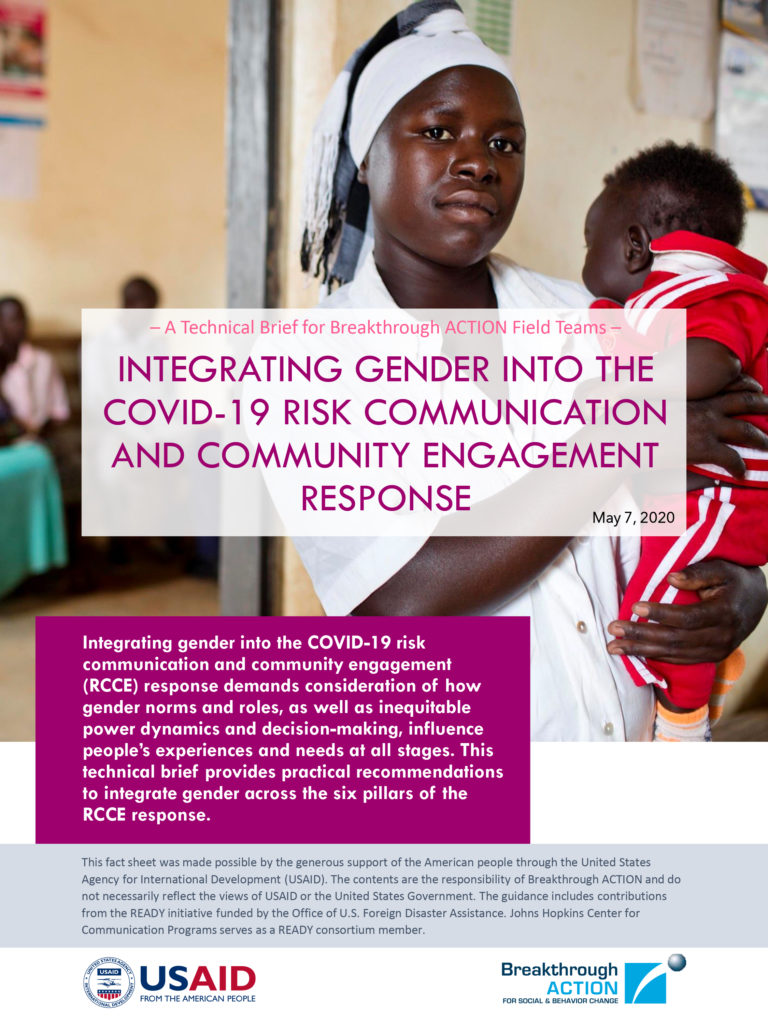The COVID-19 pandemic has exacerbated gender and social inequalities around the world. People of all genders have unique physical, cultural, security, sanitary and hygiene needs that must be recognized during the immediate crisis response, during maintenance and recovery, and after the pandemic. In addition, emerging data is showing a differential impact of the virus on women and men, with higher numbers of men dying from the disease.
As communities reach different stages of the pandemic at different times, integrating gender into the COVID-19 risk communication and community engagement (RCCE) response demands consideration of how gender norms and roles, as well as inequitable power dynamics and decision-making, influence people’s experiences and needs at all stages. This technical brief focuses on recommendations to integrate gender considerations (primarily from a gender binary perspective) in the immediate response to the pandemic, with an eye to addressing gender needs as the emergency phase shifts to maintenance and recovery.
This fact sheet was made possible by the generous support of the American people through the United States Agency for International Development (USAID). The contents are the responsibility of Breakthrough ACTION and do not necessarily reflect the views of USAID or the United States Government. The guidance includes contributions from the READY initiative funded by the Office of U.S. Foreign Disaster Assistance. Johns Hopkins Center for Communication Programs serves as a READY consortium member.


